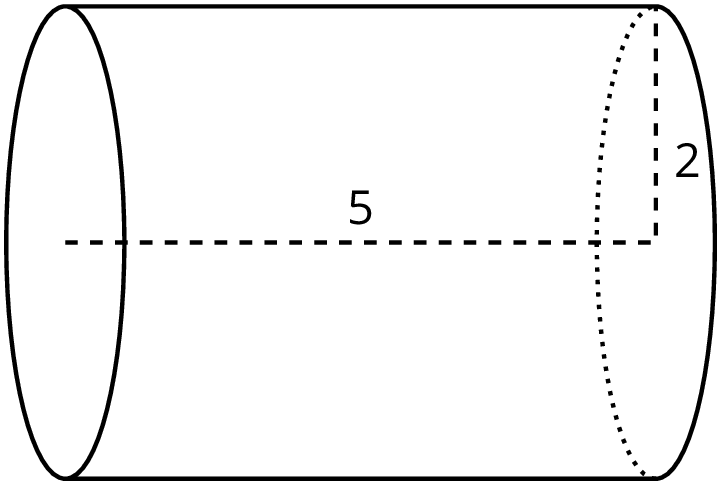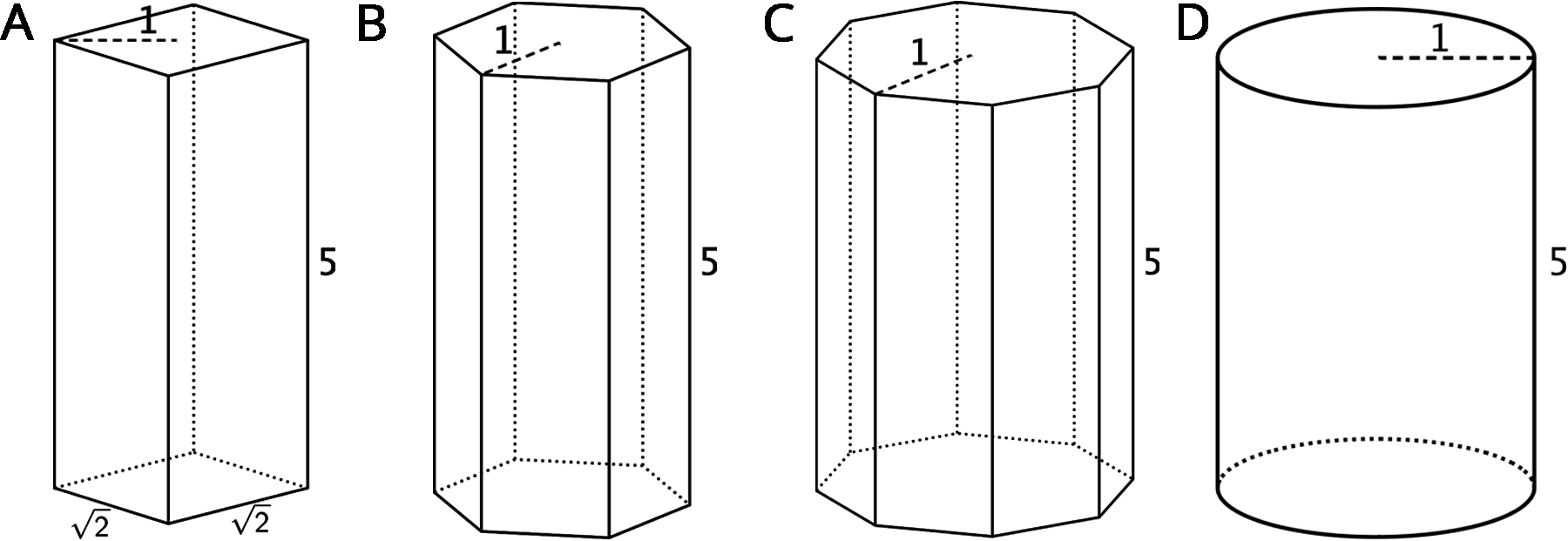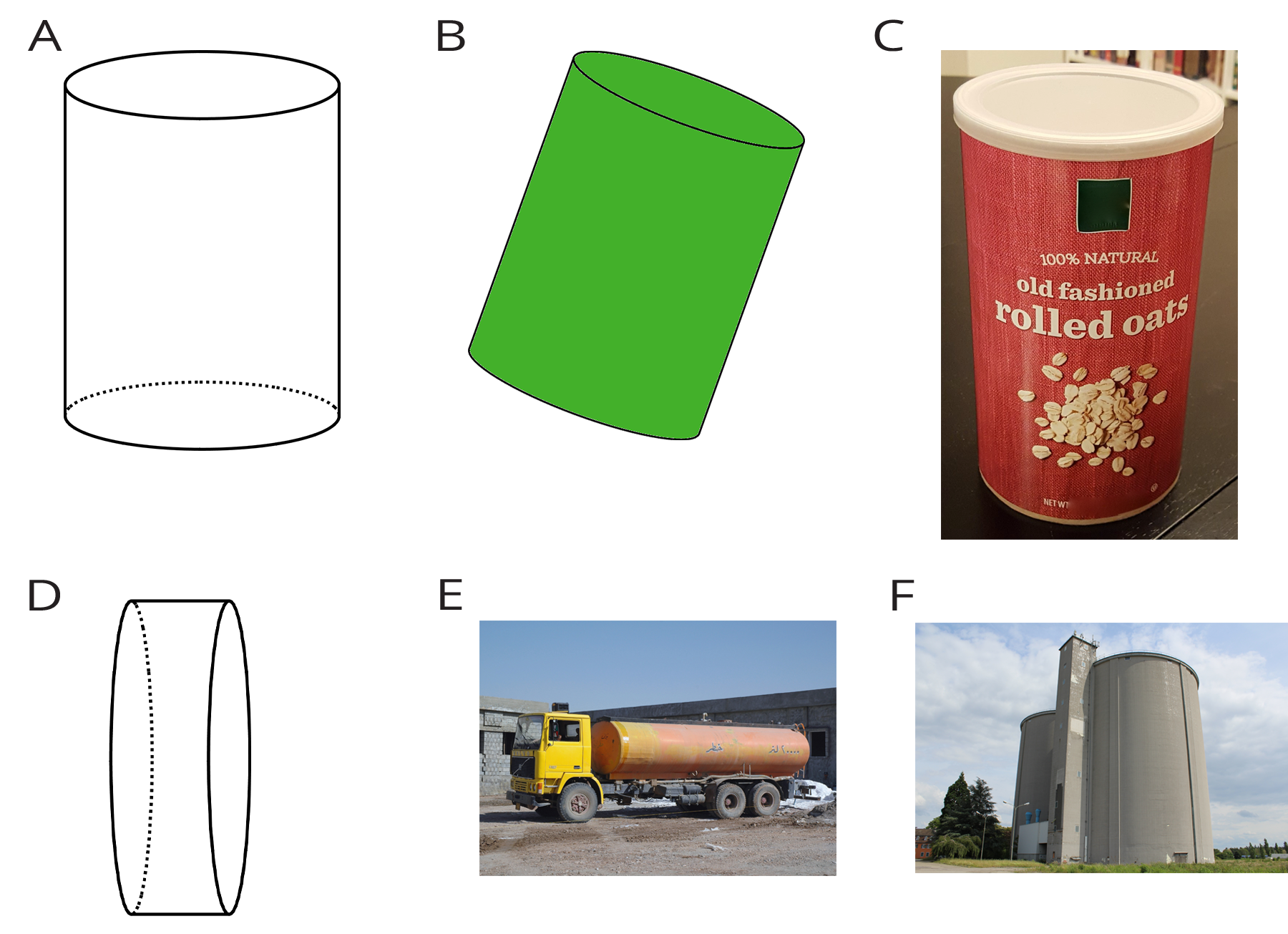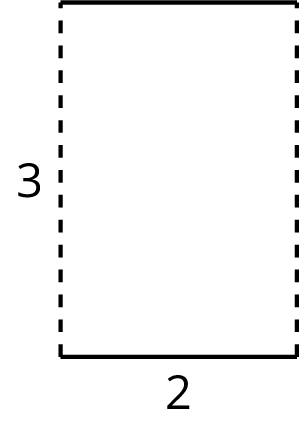We can find the volume of a cylinder with radius $r$ and height $h$ using two ideas we've seen before:
- The volume of a rectangular prism is a result of multiplying the area of its base by its height.
- The base of the cylinder is a circle with radius $r$, so the base area is $\pi r^2$.
Remember that $\pi$ is the number we get when we divide the circumference of any circle by its diameter. The value of $\pi$ is approximately 3.14.
Just like a rectangular prism, the volume of a cylinder is the area of the base times the height. For example, take a cylinder whose radius is 2 cm and whose height is 5 cm.

The base has an area of $4\pi$ cm2 (since $\pi\boldcdot 2^2=4\pi$), so the volume is $20\pi$ cm3 (since $4\pi \boldcdot 5 = 20\pi$). Using 3.14 as an approximation for $\pi$, we can say that the volume of the cylinder is approximately 62.8 cm3.
In general, the base of a cylinder with radius $r$ units has area $\pi r^2$ square units. If the height is $h$ units, then the volume $V$ in cubic units is $$V=\pi r^2h$$






